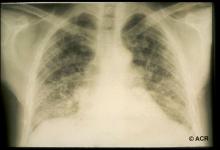Increasing Deaths and Breaking Bad with Fentanyl Save

Opioid overdose deaths quadrupled from 1999 to 2015 and accounted for 63% of drug overdose deaths in the United States in 2015. During 2010–2015, heroin overdose deaths quadrupled from 3,036 to 12,989, with heroin and illicitly manufactured fentanyl (IMF) as likely contributors to this trend. (additional citation https://buff.ly/2eHAjpn)
During 2010–2015, unintentional drug overdose deaths in Ohio increased 98%, from 1,544 to 3,050. In Montgomery County (county seat: Dayton), one of the epicenters of the opioid epidemic in the state, unintentional drug overdose deaths increased 40% in 1 year, from 249 in 2015 to 349 in 2016 with an estimated unadjusted mortality rate = 57.7 per 100,000.
Approximately 90% of unintentional overdose deaths examined in 24 Ohio counties that occurred during January–February 2017 involved fentanyl, fentanyl analogs, or both, whereas heroin was identified in the minority (6%) of cases.
Fentanyl is 50-100 fold more potent than morphine, making it much more powerful than heroin or other prescription opioids, according to the U.S. National Institute on Drug Abuse.
What's new is that fentanyl is commonly adulterated and found in combination with other fentanyl analogs. Thus leading to new variations in chemical composition of illicitly manufactured fentanyl (IMF) that make detection more difficult. Approximately 90% of all decedents tested positive for fentanyl, 48% for acryl fentanyl, 31% for furanyl fentanyl, and 8% for carfentanil. Pharmaceutical opioids were identified in 23% of cases, and heroin in 6%, with higher proportions of heroin-related deaths in Appalachian counties.
These findings highlight the urgent need to make illicitly manufactured fentanyl testing a part of standard toxicology panels for biological specimens. Because multiple naloxone doses are often required to reverse overdoses from illicitly manufactured fentanyl, assuring that sufficient supplies are provided to first responders and distributed through community overdose prevention programs can mitigate the effects of opioid overdoses.







If you are a health practitioner, you may Login/Register to comment.
Due to the nature of these comment forums, only health practitioners are allowed to comment at this time.